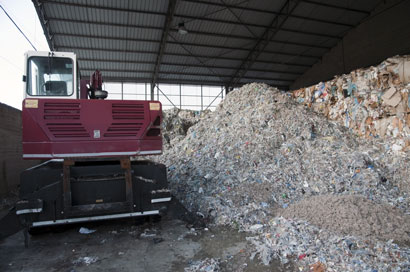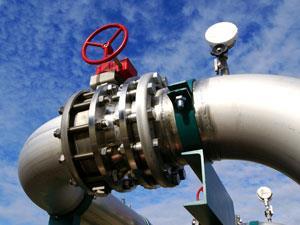Material would cut the carbon footprint of paper substantially - by 15% or more, the researchers say
A nano form of cellulose could soon displace wood pulp in paper, allowing producers to increase the amount of mineral filler they use when they make paper, thanks to work by a Finnish team. This advance would cut the carbon footprint of paper substantially - by 15% or more, the researchers say.

Cellulose is a biopolymer that provides structure in plants. 'Nanocellulose' is a new class of nanomaterial comprising crystalline or fibrous units of cellulose between 5 and 500nm in diameter and potentially hundreds of micrometres in length.
'The basic idea to increase the filler content in paper is a long lasting dream of the papermaker because china clay is typically much less expensive than the cellulose and its carbon footprint is less as it's just a mineral coming from the earth,' says Ali Harlin, a professor of renewable materials at the VTT Technical Research Centre of Finland. By adding 'nano-fibril' cellulose during the production process, wood pulp can be displaced and, because of the superior structural strength of nanocellulose, more filler can be added, cutting production costs by around 3%. Furthermore, it takes about 30% less energy to dry out because much less nanocellulose is needed. Compared with conventional cellulose, the paper is less carbon intensive. 'It's not only cheaper - it's providing better properties, it's less porous, its printing quality is higher and it's not so translucent, so in all respects you get a better paper for less money,' Harlin says.
Paper with an even higher filler content (80%) could be a suitable substrate for printed electronics. Harlin says printed electronics is a rapidly growing field and the nanocellulose paper they've made has a comparable smoothness and stability to conventional plastic substrates like Mylar A.
Theodore Wegner, assistant director of wood, fibre, composites and research at the US Deparment of Agriculture Forest Service, says that nanocellulose has huge potential. He says it should be possible to cheaply produce nanocellulose in tens of millions of tonnes, unlike conventional nanomaterials that are typically expensive to manufacture. He points out that nanocellulose also has a range of properties that makes it of great interest to materials scientists. The fibres are extremely tough, with a stiffness comparable to that of Kevlar. Furthermore, cellulose nanocrystals display piezoelectric properties comparable to that of quartz and have photonic properties. This means that nanocellulose could find uses in batteries, super capacitors, bioplastics, electronics, as well as a structural material in composites, films or coatings.
Harlin says that paper businesses are taking this technology extremely seriously and that major industrial test facilities are already up and running.












No comments yet